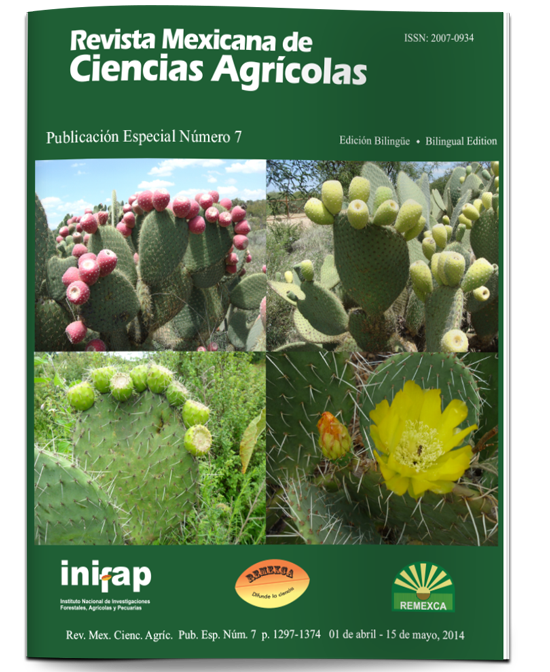RB-Huasteco, grain sorghum for areas under rainfed and irrigated conditions
DOI:
https://doi.org/10.29312/remexca.v0i7.1119Keywords:
disease tolerance, moisture and yieldAbstract
Sorghum [Sorghum bicolor (L.) Moench] is grown in 29 states in Mexico at 1.95 million hectares (SIAP, 2013), projecting the State of Tamaulipas with 48.1% of the area, followed by Guanajuato, Sinaloa, Michoacán and Nayarit, with 13.3, 12.9, 6.2 and 3.2%, respectively. In Tamaulipas production of 2.5 million tons, which is equivalent to 42% of the national total (SIAP, 2013) is obtained. However, the problem of drought caused by low rainfall and uneven distribution of rainfall is very important because 75% of the area planted to sorghum is grown under rainfed conditions and planted in irrigated areas has limited supply of water. Compounding this problem, there is the presence of diseases that attack sorghum, among which are the Charcoal rot caused by Macrophomina phaseolina (Tassi) Goid, the head smut caused by Sporisorium reilianum (Khun) Langdon & Fullerton. Another relevant aspect of the culture is its low cost, because input costs have increased, the seed being one of the most inputs have risen in price in recent years because it is imported from abroad mostly. One way to solve this problem is by obtaining more efficient plants in the use of available soil moisture and essential elements for development, and the reduction in the cost of seed. As part of this strategy, the INIFAP has developed sorghum genotypes that are adapted to the growing conditions of Tamaulipas, also presenting tolerance to common diseases. Within these genotypes is the RB-Huasteco, material released in 2010, which presents certain features to address the effects of climate change on the Tamaulipeco area.
Downloads
Downloads
Published
How to Cite
Issue
Section
License
The authors who publish in Revista Mexicana de Ciencias Agrícolas accept the following conditions:
In accordance with copyright laws, Revista Mexicana de Ciencias Agrícolas recognizes and respects the authors’ moral right and ownership of property rights which will be transferred to the journal for dissemination in open access. Invariably, all the authors have to sign a letter of transfer of property rights and of originality of the article to Instituto Nacional de Investigaciones Forestales, Agrícolas y Pecuarias (INIFAP) [National Institute of Forestry, Agricultural and Livestock Research]. The author(s) must pay a fee for the reception of articles before proceeding to editorial review.
All the texts published by Revista Mexicana de Ciencias Agrícolas —with no exception— are distributed under a Creative Commons License Attribution-NonCommercial 4.0 International (CC BY-NC 4.0), which allows third parties to use the publication as long as the work’s authorship and its first publication in this journal are mentioned.
The author(s) can enter into independent and additional contractual agreements for the nonexclusive distribution of the version of the article published in Revista Mexicana de Ciencias Agrícolas (for example include it into an institutional repository or publish it in a book) as long as it is clearly and explicitly indicated that the work was published for the first time in Revista Mexicana de Ciencias Agrícolas.
For all the above, the authors shall send the Letter-transfer of Property Rights for the first publication duly filled in and signed by the author(s). This form must be sent as a PDF file to: revista_atm@yahoo.com.mx; cienciasagricola@inifap.gob.mx; remexca2017@gmail.
This work is licensed under a Creative Commons Attribution-Noncommercial 4.0 International license.



